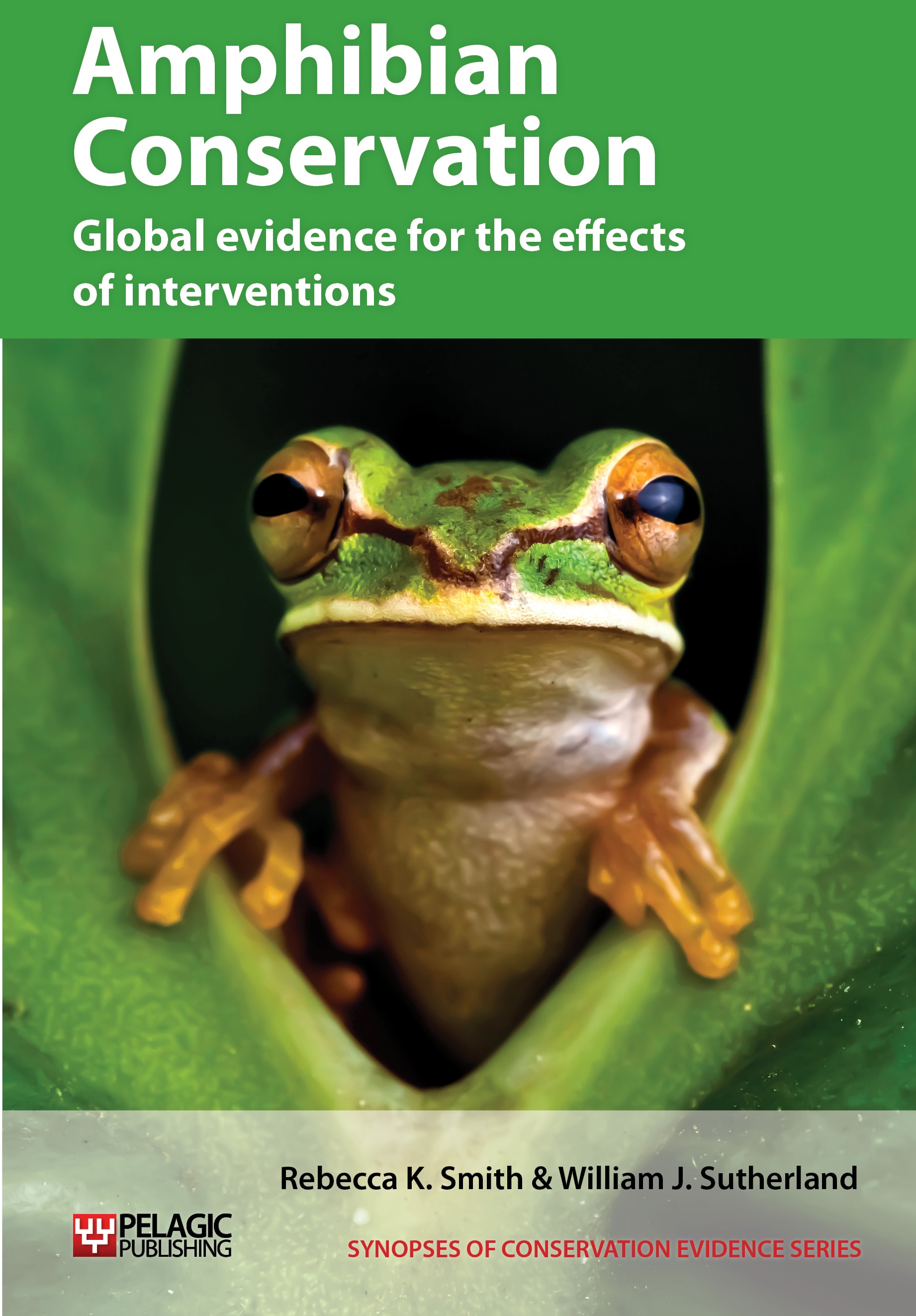Use humans to assist migrating amphibians across roads
-
Overall effectiveness category Unlikely to be beneficial
-
Number of studies: 6
View assessment score
Hide assessment score
How is the evidence assessed?
-
Effectiveness
35% -
Certainty
40% -
Harms
3%
Study locations
Supporting evidence from individual studies
A study in 1986 of 114 sites that included at least 23 human-assisted road crossings, 60 amphibian barrier fences and 11 road closure sites in Nordrhein-Westphalia, Germany (Feldmann & Geiger 1989) found that 131,061 amphibians were protected from death on roads. Between one and 116,515 individuals of 14 species were recorded at each hand-assisted, barrier fence or road crossing site. Animals were collected by hand and assisted across roads during breeding migrations at 23 sites. Nine sites had a combination of two of the interventions and for 20 sites it was unknown which of the interventions were used.
Study and other actions testedA study in 1980–1988 of a human-assisted road crossing in Bad Tölz, Bavaria (Haslinger 1989) found that thousands of toads were moved across the road each year. In 1980, a total of 15,000 toads were collected and in 1988 the figure was 7,532. Eight tunnels with wire-netting fences on both sides of the road were installed. Animals did not use tunnels and so those at the fence were collected by hand and moved across the road twice a year, before and after breeding.
Study and other actions testedA review in 1989 of toad patrols in the UK (Langton 1989) found that by 1988 there were more than 400 human assisted toad crossings which moved over 500,000 amphibians annually. Most crossings were for populations of common toads Bufo bufo, with breeding populations of over 12,000 adults.
Study and other actions testedA replicated study in 1981–1987 of toad patrols in the Netherlands (Zuiderwijk 1989) found that assisting common toads Bufo bufo across roads did not prevent the decline of nine out of 14 (64%) populations over six years. About 80% of toad crossings had fences and pitfall traps, from which toads are collected and released on the other side of the road.
Study and other actions testedA study in 1995 of 76 toad patrol projects in the UK (Froglife 1996) found that 20,000–39,000 toads were moved across roads in the spring by 71 patrols. The most frequent number moved by each patrol was 500–1,000 animals (28% of patrols). Despite human assistance, 65% of patrols reported that up to 100 toads were killed on the road, 28% reported 100–500 were killed and 7% over 500 toads. Many patrols reported that an ‘appreciable proportion’ of the total number of migrating toads were moved by humans. However, only 20% of populations were believed to be stable or increasing. Patrols involved an average of 90 person-hours, as they tended to have 1–3 volunteers/night (range: 1–14) for 11–20 nights (1–49) each lasting two hours (1–7 hours). Most patrols had been active for 3–10 years (49 of 53 patrols). Forty-four sites had toad warning road signs. A questionnaire survey of most of the known and established toad patrols was undertaken. Seventy-six replies were obtained.
Study and other actions testedA study in 1993–2010 of toad patrols during in Central and Northern Italy (Bonardi et al. 2011) found that although 1,042,966 common toads Bufo bufo were assisted across roads breeding migrations, 70% of 30 populations declined substantially from 2000 to 2010. Only 10% of the populations increased over the same period. Data on population trends were gathered mainly from volunteer toad patrol groups, with some from other volunteer groups, herpetologists and the literature. Sampling effort was taken into account when examining population trends.
Study and other actions tested
Where has this evidence come from?
List of journals searched by synopsis
All the journals searched for all synopses
This Action forms part of the Action Synopsis:
Amphibian Conservation
Amphibian Conservation - Published 2014
Amphibian Synopsis





)_2023.JPG)














